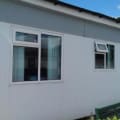How To Tile A Bathroom Floor
Are you looking to tile your bathroom floor very soon? Well, we’ve got you covered! Tiling is not the easiest skill to acquire and definitely not one you’d not want to try out on your bathroom with some practices. For the best results and to get it right the first time, we’d recommend you hire the services of a reliable professional especially if you’re inexperienced or without a bathroom tiling training. Hopefully, this quick step-by-step guide will put you in the right direction.
Bathroom Floor Tiling Procedures
lMake Sure You Have A Levelled Subfloor
• Your subfloor’s stability is crucial for the success of your tile laying.
• Once done, then you can start planning how to level the floor.
• Identify the highest point of your floor and place a really long level to determine the dip and hump spots.
• Fill in the identified low spots with mortar.
lCut The Tiles
• Using a wet saw with a diamond blade and pump, cut through the tiles to get the appropriate shape.
lChoose The Appropriate Adhesive
• To best adhesive is probably the one written on the label and suggested by the manufacturer.
• If uncertain, you can make use of a modified mortar
lPrepare The Area
• Using the prepared mixture of your mortar, prime the surface by spreading it on the floor with the trowel’s flat side.
• Once done, you can add more mortar with the ridges of the trowel.
lSpace The Tiles
• Tile spacement depends largely on the surrounding walls. Straight walls equal straight tiles, if not your judge would be required to ensure a great outcome.
• If the wall is straight, make a space of about an eighth of an inch. The bigger spacing, the higher the possibility for the grout to become visibly discoloured.
lUse The Right Grout
• With sanded and unsanded grouts having a variety of colours, choosing the ideal grout can a tricky affair.
• The size of the spaces play a huge role in determining the best choice.
• Use a sanded grout if the spacing is an eighth of an inch or more. However if less, make use of the unsanded grout.





